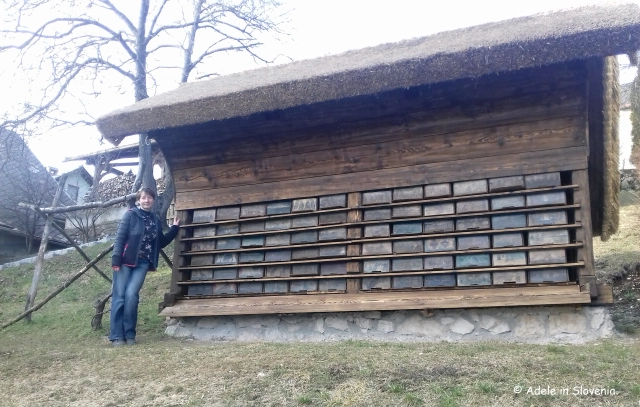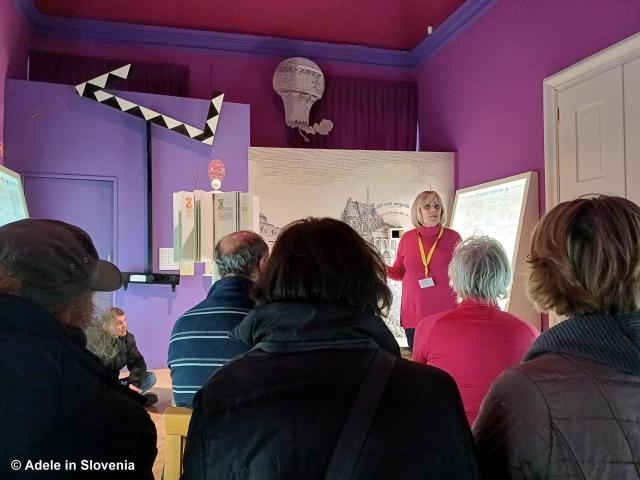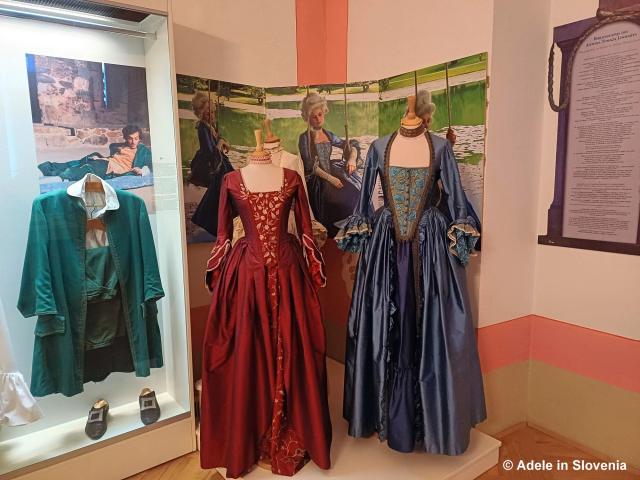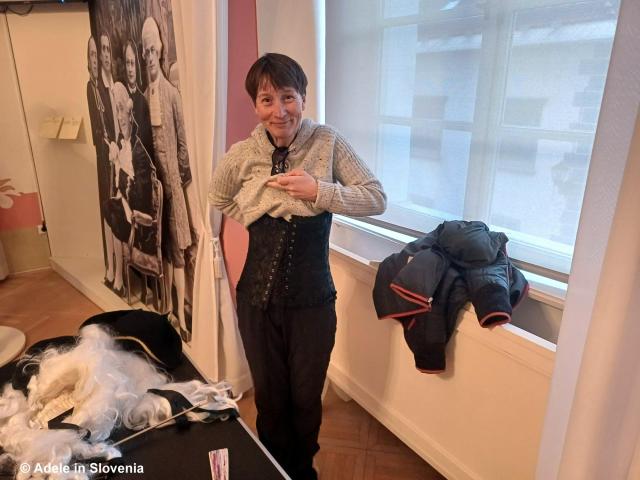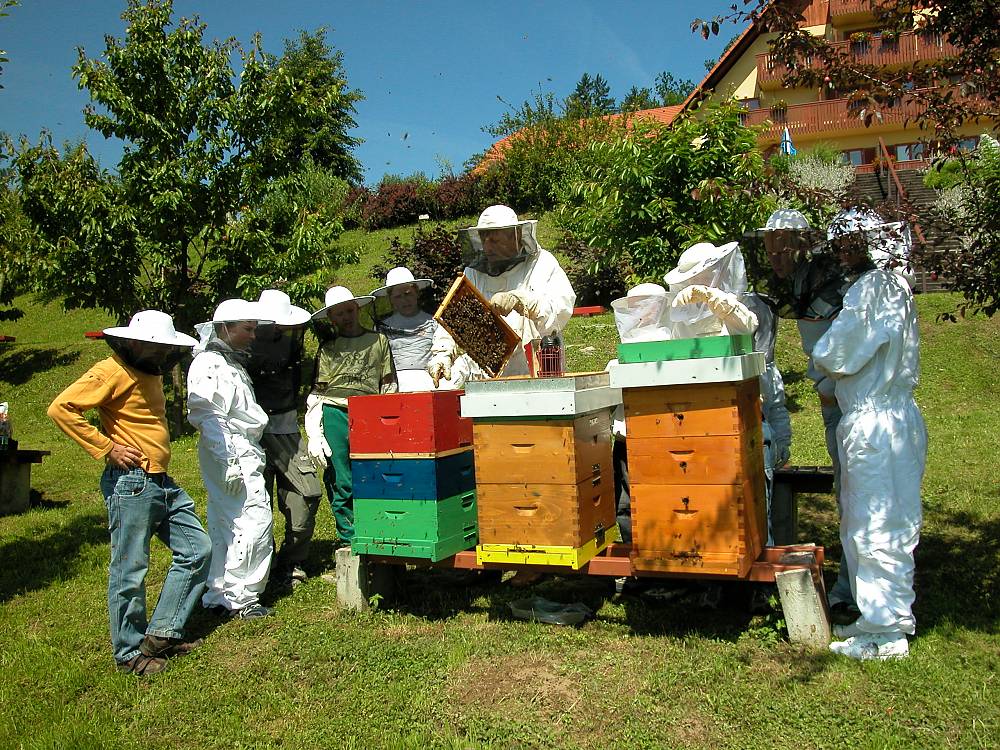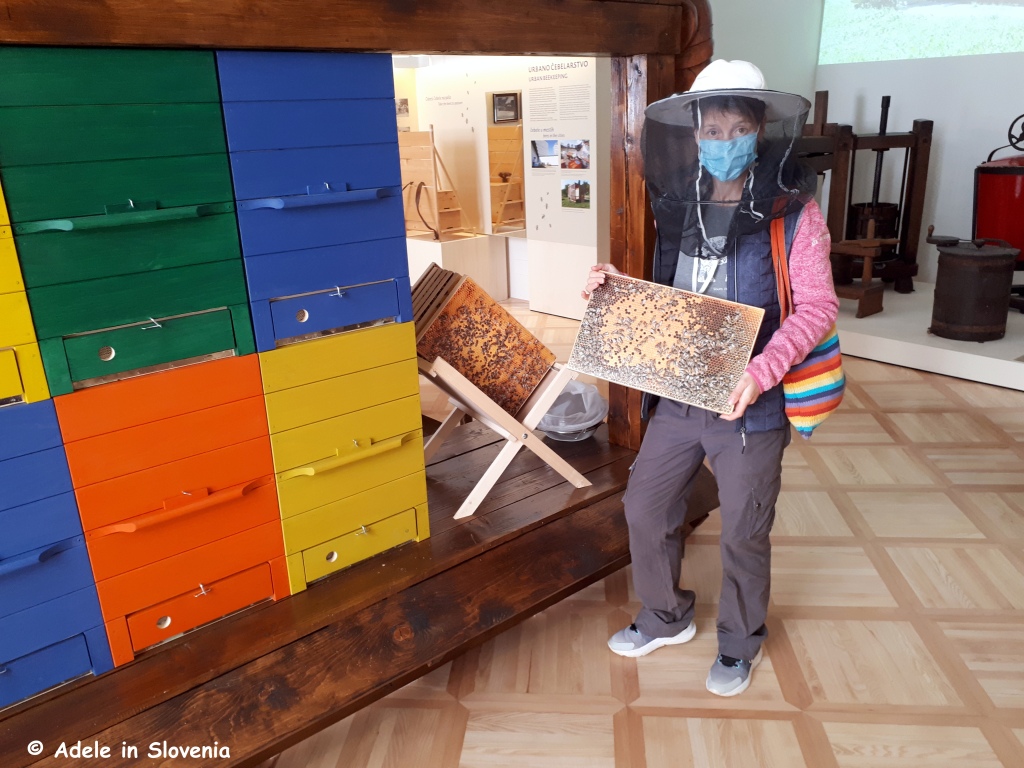Since I think I have a right these days to call myself a ‘Radolčanka’ (i.e. a Radovljica local), I thought I would share with you some of my top insider tips, some of which are more obvious than others!
So, in no particular order…
YOU WILL NEVER GO HUNGRY OR THIRSTY IN RADOVLJICA…at the last count – in my head that is so I could have forgotten the odd one – I totted up 23 bars, cafes and restaurants in Radovljica itself – not to mention the numerous others within the municipality. So, there’s no need to worry about going hungry or thirsty whilst visiting! And now there’s an exciting new ‘kid’ in town too – Linhart Hotel & Bistro – in Linhart Square, the heart of the old town. The hotel opened a couple of years ago but has just been taken over by the hugely successful and popular restaurant Vila Podvin, with head chef (and celebrity chef these days!) Uroš Štefelin at the helm. Expect bistro-style food – Uroš style!

THERE’S A VISIBLE TUNNEL... Okay, so it’s not an insider tip as such, but I’ve included it here since it’s easy to miss. The only preserved moat tunnel in Slovenia is found beneath Radovljica’s old town centre. It was renovated, and partly built-over, some years back, and is well-illuminated, meaning you can walk through it at any time as part of a visit to the old town centre. I’m rather lucky as I live just minutes from the old town and can therefore see it by day and by night, though the latter trumps it for me!

AND AN INVISIBLE/HIDDEN TUNNEL TOO…well, that is if legend is true! It is said that there is a tunnel that runs underground from the well in Linhart Square all the way to Lipnica Castle. To date no one has actually found it, but the legend lives on…!

AND EVEN A ‘SECRET’ CHAPEL…the Edith Stein Chapel is hidden away behind the vestry tower of Radovljica’s baroque St. Peter’s church in Linhart Square, and surprisingly few people even know it’s there. Edith Stein was a German-Jewish philosopher, born on 12 October 1891 to Jewish parents, who converted to Catholicism and became a Carmelite nun.
Also know as St. Teresa Benedicta of the Cross, she was canonised as a martyr and saint of the Catholic Church, and is one of six co-patron saints of Europe. Edith and her sister Rosa, who was also a convert and an extern sister, were sent to the Carmelite monastery in Echt in the Netherlands in 1938 for their safety, where, despite the Nazi invasion in 1940, they remained until they were arrested by the Nazis on 2 August 1942 and sent to the Auschwitz concentration camp, where they died in the gas chamber on 9 August 1942.

WE HAVE RATHER LOVELY CEMETRIES…bear with me on this one! I know it might sound odd but it’s true, Radovljica’s (and in fact in general throughout the country) two cemetries are so well kept. There is always an abundance of fresh flowers, plants and glowing candles, and a sense of peace prevails. You can admire both the cemetries as you pass on a walk towards the Sava river and the Fux footbridge.

RADOVLJICA REALLY IS A ‘SWEET’ TOWN…in so many ways! Not only is the town’s slogan ‘Honestly Sweet‘ but Radovljica is also the home of the biggest and best chocolate festival in Slovenia and a honey festival too. This year’s Radovljica Chocolate Festival – the 9th in a row – takes place from Friday 17th to Sunday 19th April.
WE LIKE TO STICK TOGETHER…Taste Radol’ca is a great example of this. Rather than being in competition with each other, many of Radol’ca’s restaurants have joined forces and, in doing so, have realised and reaped the benefits of cooperation and collaboration. In doing so they are also supporting local farmers, beekeepers and producers of other goods, by including locally sourced ingredients on their menus. Each year there are an increasing number of events at which Taste Radol’ca restaurants are present, such as the Radovljica Chocolate Festival, summer Thursday concert evenings, the November Month of Local Cuisine, various Christmas and New Year events, and more.
WE LOVE OUR BEES…the Museum of Apiculture, the Beekeeping Education Centre of Gorenjska, the ‘Follow a Bee Through Radovljica‘ family adventure, an annual Honey Festival, and numerous beautifully painted apiaries where hardworking bees, and equally hardworking beekeepers, ensure that we have a plentiful supply of local honey.
IT LOOKS GREAT FROM ABOVE OR BELOW…Wherever you view Radovljica from – whether up high in the mountains or down beneaths its terraces – Radovljica’s old town centre with its prominent church is picture postcard stuff! So, whether you choose a stroll beside the Sava river on the Sava River Trail, or one of the marked hiking trails, such as to St. Peter’s church above Begunje, or even higher to the Roblek mountain hut or the peak of Begunščica, you are assured of a great view and a totally different perspective of the beauty of Radovljica and its surroundings.
SEEK OUT BUNKERS FROM THE RUPNIK LINE…the Rupnik Line is a system of fortifications that were built during the 1930’s by the Kingdom of Yugoslavia as a defence line on the border with the Kingdom of Italy. The strategically placed forts and bunkers were never actually used for military or defence purposes, but they at least brought residents a temporary solution to the unemployment and financial troubles which affected them due to the location of the Rapallo Border. In Radovljica there are bunkers on the Obla gorica hill, which is located behind the swimming pool, as well as on the grassy bank in the street Cankarjeva ulicacop. I recently read that, in fact, there are around 50 such bunkers located across the Jelovica plateau, Radovljica and Begunje na Gorenjskem, though, to date at least, I’ve only come across a handful. Hmm, an idea is brewing, how many (more) can I/you find?!

I hope this has given you plenty of ideas for exploring (more of) Radovljica and you’ll agree that’s there’s certainly more than meets the eye!
© Adele in Slovenia

